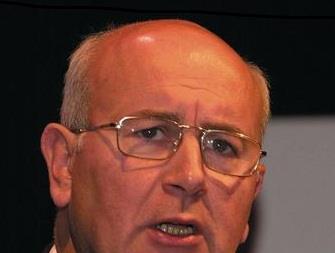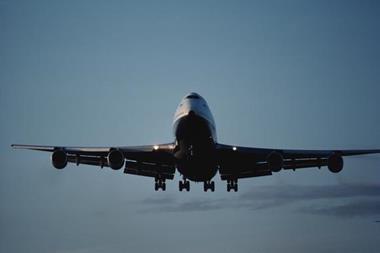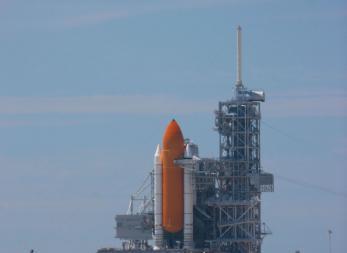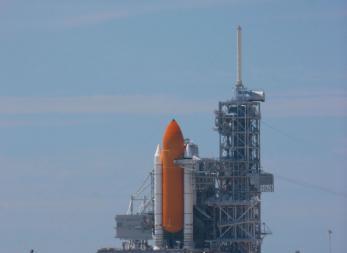The risks involved in putting a satellite into operation highlight a clear need for (re)insurance. What does it take for reinsurers to go into orbit in this market?
Space may be known as the final frontier, but around the Earth it is increasingly populous. More than 30 satellites go into orbit each year, joining the total of about 170 already circling the globe.
As with other sectors of transport and commerce, it is the involvement of the (re)insurance business that allows operators to share their risk. The space market provides all-risks coverage to satellite owners and operators for launch into geo-stationary orbit or near-earth orbit.
Satellite values can range from $150m to $400m with launch vehicles an additional factor. Media satellites tend to go into geo-stationary orbits – on the same latitude (equator) and at the same speed as the earth turns, thus appearing motionless from the ground – while those providing telecommunications or global positioning (GPS) will be placed into lower orbits.
Cover is broken down into two separate phases, says Atrium Space Insurance Consortium underwriter David Wade.
“Launch cover includes the launch and first year in orbit – from the moment of ignition, on the launch vehicle through to separation from the rocket once in orbit. Following that, the satellite has to get to its correct height,” he says.
“Typically, the first month in orbit will be spent rigorously testing the satellite before it goes into commercial service.”
Once the satellite has completed its first year of service, the cover will move to in-orbit cover.
Because cover begins at launch, there is no specific renewal date for the sector. “It’s constant throughout the year. We do not have a key renewal date as satellite cover renews on the anniversary of the launch,” says Wade.
Overall the recent loss history in the market has been exceptionally good, with no losses recorded between September 2009 and September 2010.
Aon International Space Brokers London business unit leader Clive Smith says: “For launch and a year in orbit the theoretical market is about $780m, but the typical offered capacity is about $500m. Capacity is at a historically high point and rates are soft. Rates have been coming down for the past couple of years.”
Falling from space
However, the failure in October of the Eutelsat W3B – after a propulsion system led to a fuel leak – is expected to cause a loss of between $300m and $400m.
Guy Carpenter managing director and global practice leader for aviation Ian Wrigglesworth says: “The Eutelsat loss should temporarily halt any further decrease in rates. No new reinsurance capacity is coming into the market as it is perceived to be at the bottom of the cycle and I’d expect this to remain flat for 2012.”
Kiln head of space underwriting Laurent Esquirol says: “Rates have been decreasing steadily and have crossed the 10% threshold for launch plus one year. What you have to take into account is that as long as there are no claims, the burning cost of the market is improving.”
He adds: “Rates for in-orbit life coverage today are close to 1%. We are quite close to the bottom. Some satellites might be getting lower rates, but complex ones could be a lot higher.”
Esquirol highlights the key issue when renewing cover. “The main point is the health status, which comes in a 10-page document. It tells you how the various subsystems of the satellite are performing, solar array, batteries, thrusters, data handling, payload and so on,” he says.
But Wade warns: “There is a surplus of capacity at the moment, so there is tremendous pressure on rates. Rates are about half of what they were four or five years ago. Premium income is about $700m for the whole market, so some people are only one loss away from serious trouble.”
Atmospheric pressure
The space market is no stranger to serious trouble, having suffered a series of crippling claims around the turn of the millennium.
Sima Adhya, director of space insurance at risk modelling firm Sciemus, says: “When we saw a number of in-orbit losses in the late 1990s and early 2000s, they were mainly due to the fact that the technology provided by the manufacturers could not reliably match the technology required by the operators.”
Adhya continues: “There was a push for higher performance and thus higher powered spacecraft in the 1990s and the testing was just not as rigorous as it is nowadays. Now, the level of testing is much greater and the technology used is proven and more stable.”
Wade places some of the blame on underwriters for allowing the terms and conditions of cover to slip to dangerous levels. “Insurers were being incredibly weak and were supplying policies that were for launch and the first five years in orbit. A lot of problems came to light after satellites had been in service for a while,” he says.
This led to problems with satellites such as Boeing’s 702 series, which developed faults after about three years in orbit. It meant underwriters were not just liable for the original loss incurred, but had also continued to write cover for a faulty design, adding to that loss.
“As a consequence of that, operators backed away from manufacturers, whereas previously they had been keen to get vehicles to launch as quickly as possible and testing had taken a back seat. The length of time to manufacture a satellite has now increased and testing is better,” says Wade.
There have been other technical improvements too. The electrical margin on components has been raised from 2.5% to 7.5%, and while the size of some satellites increased from two tons to five tons in the 1990s, that has since stabilised.
Giant leap for underwriting
However, although many of the factors that have led to the space market becoming more profitable have come from the industry’s side, many others have come from improvements on the underwriting side.
“In the 1990s there were a few leaders and a number of underwriters content to make up the following market –perhaps they did not have the technical expertise necessary to lead the market. In order to get a larger slice of the pie those players have had to improve their expertise,” says Wade.
Sciemus’s Adhya agrees: “In addition to increased reliability from manufacturers, insurers are now much more diligent in terms of coverage restrictions.
“An example of this would be if there were loss of redundancy on a satellite, insurers would seek to have an exclusion or deductible put in place for the loss of redundancy. This underwriting position has saved insurers from a number of claims.”
One notable factor in the space market is that the primary market tends to retain much of the original risk.
Wrigglesworth says: “40% of the market is provided by consortia and agencies and the vast majority of satellite insurers do not buy reinsurance. Less than 10% is provided by quota share reinsurance and a small number buy excess of loss. The pricing of excess of loss is determined by the loss history and forward-looking exposure.
“The Eutelsat loss in October has provided reinsurers with a good reason to re-evaluate the pricing.”
Wrigglesworth adds: “If you are a reinsurance company in the space market, you would probably have one or two primary underwriters that you’d follow and they would have the expertise. It is about finding the right partner to help you follow your underwriting strategy.”
Hosted by comedian and actor Tom Allen, 34 Gold, 23 Silver and 22 Bronze awards were handed out across an amazing 34 categories recognising brilliance and innovation right across the breadth of UK general insurance.












































